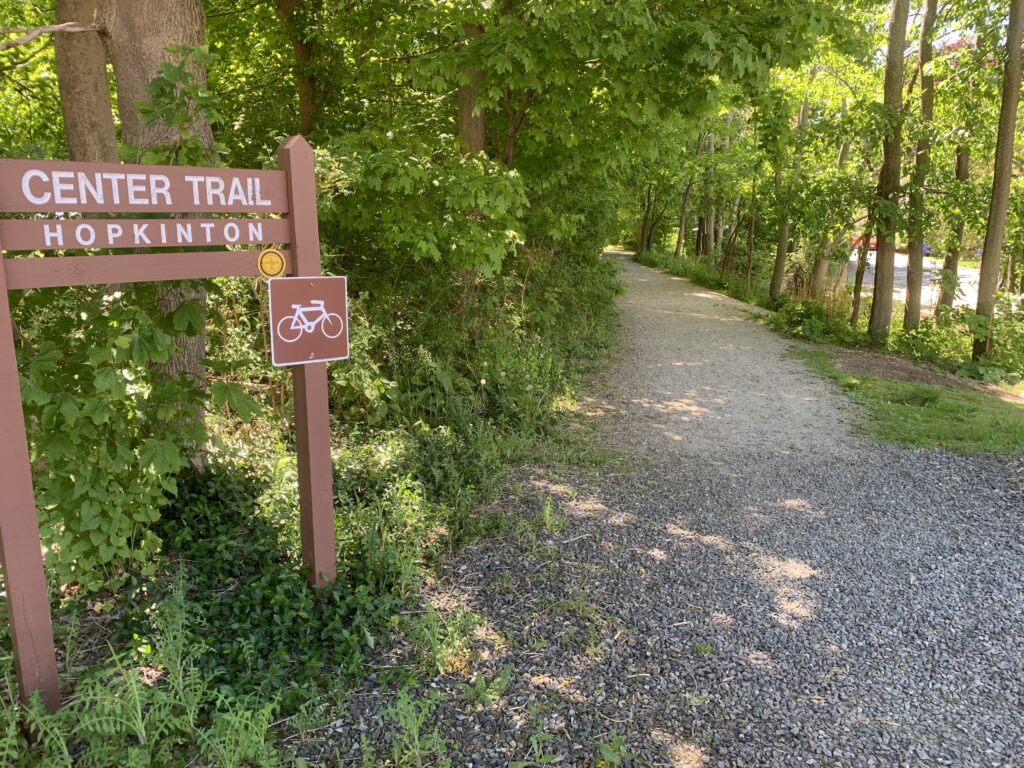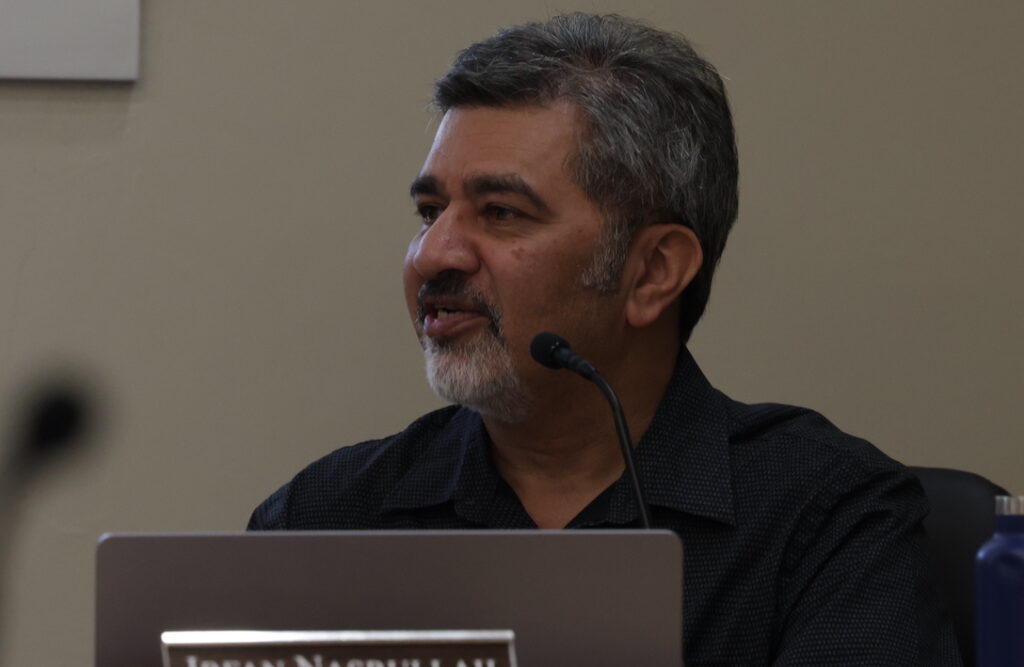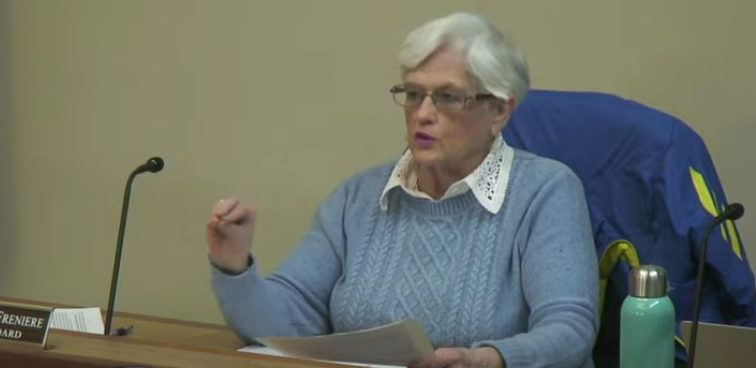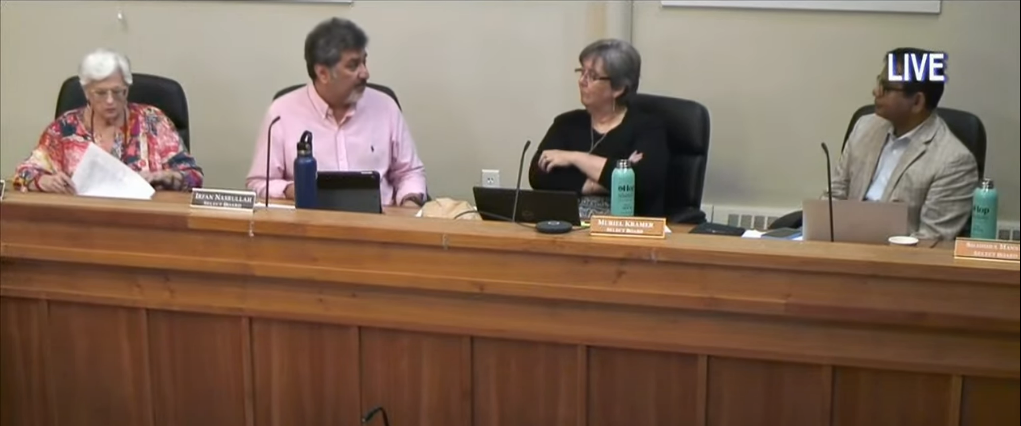The Upper Charles Trail Committee met Wednesday night for the first time in nine months at the request of the Select Board to review and discuss its charge and membership structure.
The Select Board in May 2023 voted to suspend the UCTC after a nonbinding vote at that month’s Annual Town Meeting showed that 72% of 219 voters preferred that the committee be disbanded and reconstituted as a Trails Committee subcommittee. The decision sparked the creation of a survey by the Select Board to gather wider public feedback on the UCTC, but the response rate was very low. In August 2023, the Select Board voted to keep it as a separate committee from the Trails Committee, but it noted that it needed to be restructured.
“We have been given very specific guidelines by the Select Board,” said chair Jane Moran at the meeting’s start. “They want us to review the current charge. And they want us to speak to some of the improvements.”
She explained that the UCTC originally was created to recommend to the Select Board a developmental plan for an multimodal trail for both active and passive recreation that would connect Milford to Ashland. It subsequently would develop it if the Select Board approved the plan. The scope of its mission includes “planning, design, permitting, property rights acquisition and construction of the trail and associated infrastructure.”
The UCTC is allowed to advocate for Community Preservation funds and to seek input from residents, Moran added. She also stressed that the charge indicated that the Upper Charles Trail had to include the Center Trail.
“This is the charge that we’ve been following, and we’ve always followed it,” said Moran, calling it “pretty straightforward.”
“I find the charge to this committee to be a reaction rather than a thought process,” said vice chair Eric Sonnett. “For example, the Select Board could not have done a worse job in outlining our committee by insisting that we use the Center Trail as part of the Upper Charles [Trail].”
He added that this restriction is what caused the UCTC to explore a trail crossing Hayden Rowe Street. Its proposed route crossing this main street multiple times caused a public uproar and was taken off the table.
Sonnett also charged that when it created the UCTC, “the Select Board gave it no budget and no infrastructure.”
He also noted that the Select Board liaison has rarely attended any UCTC meetings during the committee’s existence. Irfan Nasrullah, the current Select Board liaison, was not present at the meeting.
Member Scott Knous suggested that the Center Trail use requirement be removed from the charge. The UCTC still could consider incorporating it into the Upper Charles Trail if that were determined to be the best route.
He added that there should be “a more deliberate connection to the Select Board in our charge.” There should be a quarterly update to the Select Board included on the Select Board agenda.
Said Moran: “More communication is never a bad thing.”
Member Jim Ciriello pointed out that the Select Board liaison should be giving reports to the board about the UCTC.
“There’s been a lack of interest from the Select Board,” said Moran. “I’ve addressed it with them, and this has been their response.”
She noted that the liaison rarely attends, and the board is informed by reading UCTC meeting minutes.
Liaison interaction stressed
One improvement suggested is that liaisons from the Select Board, Conservation Commission and Parks & Recreation Commission attend UCTC meetings. A liaison from the Trails Committee should be added, Moran said.
Stressed Moran: “We rely on this information whenever we have a meeting.”
Discussion occurred about whether or not liaisons should have voting privileges. Tim Ritterbusch said that having liaisons vote would take away from the impact of the votes of UCTC members. The issue remained undecided.
The UCTC decided to let the two alternate members vote only if a quorum is not present, which is the current structure.
Knous said each UCTC member should have a “designated role,” such as for website development, community outreach and trails engineering. Moran called it an “unrealistic goal in reality” but said she would recommend it as an improvement strategy.
Committee history outlined
Moran prepared two flow charts for the Select Board on the history of the UCTC’s actions. One outlined the properties that the UCTC has analyzed or were able to acquire. The second showed highlights of the UCTC’s accomplishments over the past decade taken from meeting minutes.
“It’s a good piece of history to show how much we’ve accomplished,” she said. “There’s a lot of institutional knowledge.”
Current goals, challenges addressed
Moran said a priority is for the UCTC to get an environmental notification form (ENF) approved through the Massachusetts Environmental Protection Agency. This would allow it to apply for transportation information plan (TIP) grants.
She said when the committee tried two years ago, its aim was “misunderstood and blown out of proportion” because a potential trail was drawn crossing and running along Hayden Rowe Street.
“There were absolutely no plans to take anybody’s property,” she explained.
The members also agreed that the UCTC recognizes that the Select Board does not want a trail crossing Hayden Rowe Street.
Knous suggested that the UCTC hold a public forum to gain feedback from the people who wanted to see it disbanded and others, as well as to put forward its goals. He also noted that the UCTC has to be “more disciplined” during its meetings, pointing out that the discussions meandered from the agenda.
A report was to be presented to the Select Board on the results of this meeting along with supporting documents.




















0 Comments